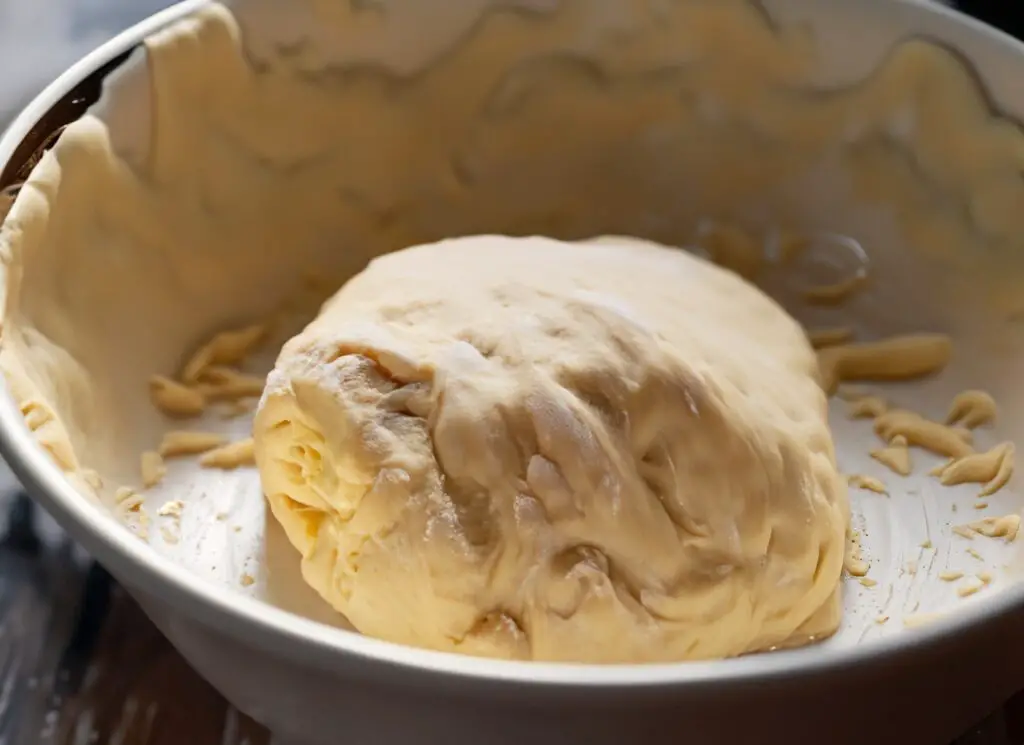As an Amazon Associate KitchenwareSets.com earns from qualifying purchases.
How Long Can You Let Dough Rise? (And Why It Matters)
Did you know that the secret to a perfect loaf of bread lies in How Long Can You Let Dough Rise?
Yes, that’s right! The process of dough rising, also known as proofing or fermenting, is a crucial step in bread making. But why does dough rise and how long does it take?
Let’s dive in and find out!
Key Facts:
- Dough can sit out on the counter for up to four hours for yeast-made bread, or six hours for sourdough. (Source: Team Research)
- For the best flavor and texture, it’s best to let dough rise for at least 8-10 hours. (Source: Team Research)
- You can let dough rise overnight if you want to delay baking. (Source: Team Research)
- Bread dough can be left to rise overnight as long as it is chilled in the fridge or another cold space. (Source: Team Research)
- Dough that has risen for too long will often have a very sour taste and the texture of the bread won’t be good either. (Source: Team Research)
How Long Can You Let Dough Rise?
The amount of time that dough can rise depends on a number of factors, including the temperature of the room, the type of yeast used, and the amount of flour in the dough. In general, the dough will double in size in about 2-4 hours at room temperature. However, you can let the dough rise for longer periods of time, up to 12 hours, or even overnight. If you let the dough rise for too long, it will start to taste sour.

Several factors affect the rising time of dough, including temperature, yeast, flour, humidity, and even the size of the dough.
Temperature
Temperature plays a crucial role in how long you let dough rise. Yeast, the tiny organism that makes dough rise, loves warmth. A cozy environment speeds up yeast activity, making dough rise faster. On the flip side, a chilly temperature slows down yeast, extending the dough rise time.
Tip: To control your dough’s rising time, adjust the temperature. A warmer spot for a quicker rise, or a cooler place if you want to slow things down.
Yeast
Yeast is the star of the show when it comes to dough rising. It feeds on the sugars in your dough, producing gas that makes the dough rise. Different types of yeast can impact the rising time of your dough.
Key Takeaway: Using more yeast can speed up the rise time, while less yeast can slow it down.
Flour
The type of flour you use can also influence how long you let dough rise. Whole grain flour, for example, take longer to rise than white flour. This is because they’re denser and take longer for the yeast to work its magic.
Tip: Choose your flour based on the type of bread you’re making and the rise time you’re aiming for.
Humidity
Just like humans, yeast loves a bit of humidity. In a dry environment, the dough can form a crust, which hampers rising. Conversely, in a very humid environment, the dough can become too sticky.
Key Takeaway: To create the perfect environment for your dough to rise, maintain a balance in humidity.
Size of the Dough
The size of your dough can affect its rising time. A small dough will rise quicker than a large one.
Tip: If you’re in a hurry, divide your dough into smaller portions to speed up the rising process.
How to Tell When Dough Is Ready to Rise
Wondering how to tell if your dough has risen enough? Here are a couple of tests you can do:
- The Poke Test: Gently poke your dough with your finger. If the indentation fills up slowly, your dough has risen enough. If it springs back immediately, it needs more time.
- The Volume Test: Most recipes will tell you to let the dough rise until it has doubled in size.
How to Prolong Dough Rising Time
If you’re not ready to bake just yet, there are ways to prolong the dough rising time. You can:
- Refrigerate your dough. The cool temperature slows down yeast activity, extending the rise time.
- Cover your dough with a damp cloth or plastic wrap to prevent it from drying out.
How to Prevent Dough from Rising Too Much
Over-risen dough can lead to bread with a coarse texture and a yeasty flavor. Here’s how to prevent that:
- Punch Down the Dough: This helps to release some of the gas bubbles formed by the yeast, preventing over-rising.
- Keep the Dough Warm: A warm environment speeds up yeast activity, shortening the rise time.
FAQs About How Long Can You Let Dough Rise
Can you leave dough to rise for too long?
Yes, dough that has risen for too long can develop a sour taste and a coarse texture.
Can I leave dough to rise overnight?
Yes, you can leave dough to rise overnight. However, it should be refrigerated to slow down the yeast activity and prevent over-rising.
How many hours should you let dough rise?
As a general rule, dough should be allowed to rise for at least 1-2 hours. However, for the best flavor and texture, letting it rise for 8-10 hours is ideal.
Can I let dough rise for 48 hours?
Yes, dough can be left to rise for 48 hours, especially if it’s refrigerated. However, it’s important to note that the flavor may become more sour the longer the dough rises.
Summary
In conclusion, understanding how long you can let dough rise is crucial for achieving the best flavor and texture in your bread. Factors such as temperature, yeast quantity, flour type, humidity, and dough size all play a role in determining the rise time.
By following the recommended guidelines and using techniques like refrigeration and covering, you can control the rise time and achieve the desired results. Remember to perform tests like the poke test and volume test to determine when your dough is ready. With these tips, you’ll be able to create delicious homemade bread with perfectly risen dough.
So, the next time you’re baking, remember that patience is key. Let your dough rise and give it the time it needs to transform into a beautiful, fluffy loaf. Happy baking!




